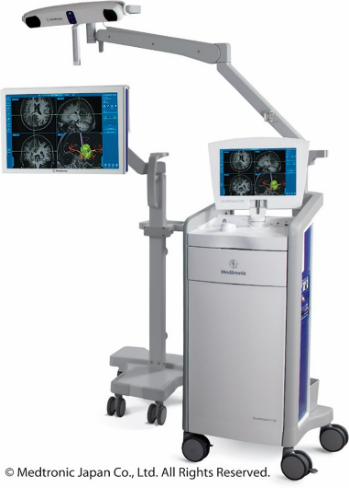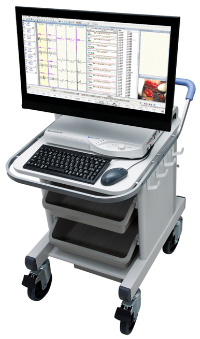Intraoperative navigation and intraoperative monitoring play an important role in minimally invasive neurosurgery.
In 2006, intraoperative navigation was introduced at Teikyo University Chiba General Medical Center, where I used to work as an associate professor, and the surgical method changed significantly.
I examined the usefulness and disadvantages of 144 cases using navigation and 77 cases using intraoperative neuromonitoring, and made a presentation at the 71st Annual Meeting of the Japan Neurosurgical Society on December 17, 2012. This section introduces the contents.


[Abstract]
[Title] Efficacy and shortcomings of surgical navigation and neuro-monitoring for neurological surgery
Background: Intraoperative navigation and intraoperative monitoring play important roles in minimally invasive neurosurgery. At Teikyo University Chiba General Medical Center, intraoperative navigation was introduced in 2006, and the surgical method changed. [Subjects and Methods] We examined the usefulness and disadvantages of 144 patients who used navigation and 77 patients who underwent intraoperative neuromonitoring.
Results: Navigation was used in 135 cases of brain tumorectomy, 2 cases of AVM, and 2 cases of subcortical hemorrhage. Intraoperative monitoring was used in 25 cases of ABR, 7 cases of SEP, 46 cases of MEP, 7 cases of VEP, 1 case of EOM, 2 cases of EEG, 14 cases of facial nerve stimulation + monitoring, and 4 cases of lower cranial nerve stimulation + monitoring. Acoustic schwannoma, brain stem hemangioma, ependymoma of the fourth ventricular base, facial neurovascular decompression, facial nerve stimulation + monitoring for acoustic schwannoma, brain stem tumor, VEP for occipital lobe lesion, MEP for frontal lobe/parietal lobe tumor , middle cerebral aneurysm/internal carotid aneurysm clipping, SEP was useful in brainstem tumors, internal carotid endarterectomy, and extracranial-intracranial anastomosis.
[Discussion] Changing the depth of navigation enabled a safer and more accurate approach to deep brain lesions. There was a 2 cm gap, and it was necessary to devise the body position and correct the position in advance, taking into consideration the movement of the brain and the degree of brain atrophy. There are cases in which monitoring is ineffective due to problems with the electrodes, etc., and it was considered essential to improve monitoring techniques, such as the accurate installation of monitoring equipment and the need to ensure that the electrodes are in close contact with the patient so that they do not come off.
CONCLUSION: Intraoperative navigation was particularly effective during resection of deep brain lesions. Intraoperative neuromonitoring should be used according to the location of the lesion. Appropriate use of both makes it possible to reach deep brain lesions more accurately and quickly, and to remove lesions safely.
Currently, I am working as the head of neurosurgery at Mitsui Memorial Hospital. Based on this experience, I am performing craniotomy tumor resection at Mitsui Memorial Hospital, freely using intraoperative navigation and intraoperative monitoring. You can also see the slides of the lecture titled "Neurosurgical Surgery Using Neurological Function Monitoring" at the Mitsui Memorial Hospital Regional Collaboration Forum on May 19. Community Collaboration Forum Slides(JAPANESE)intraoperative electrophisiological monitoring

Snowboading head injury
coffee intake prevent silent cerebral infarction
Stroke:general information
treatment of intracerebral hemorrhage
treatment of subarachoid hemorrhage
carotid endoarterectomy
STA-MCA anastomosis
Moyamoya disease
arterio-venous malformation: AVM
MRI T2* WI
Tumor removal part 1 : FLAIR
Tumor removal part 2: navigation and monitoring
Tumor removal part 3 : approach through sulci
Tumor removal part 4 : MIB-1 labeling index



 HOME
HOME HOME JAPANESE
HOME JAPANESE Self Introduction
Self Introduction Paper/Presentation
Paper/Presentation